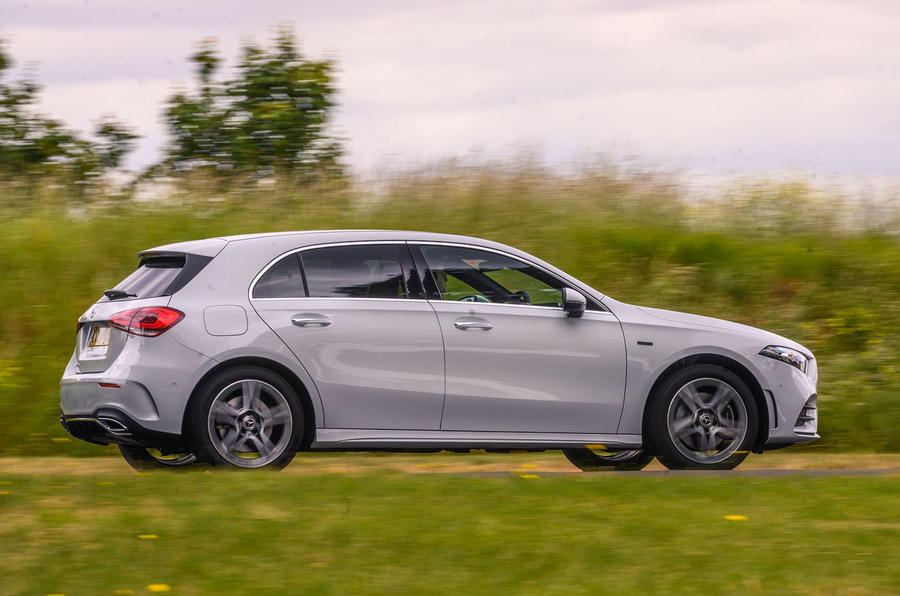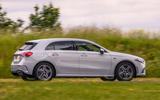What is it?
Mercedes is not a firm to do things by halves these days.
While many of its rivals have only two or three models in the plug-in hybrid (PHEV) arena so far, Stuttgart is already closing in on double figures. And while that’s counting petrol- and diesel-engined derivatives separately, it’s not counting saloon, hatchback, estate and coupé bodystyles individually. There are already PHEV versions of the C-Class, E-Class, S-Class, GLC and GLE, and more are arriving.
The firm is now well into a second wave of these fleet-friendly, company-car-tax-saving models, having partly rebranded them under the EQ Power umbrella last year. And it has just introduced to the UK market the smallest and cheapest of them all, which also has the potential for the greatest fleet success: the A250e.
By levering a relatively large lithium ion drive battery (15.6kWh gross capacity) under the rear cabin floor of an A-Class hatchback, Mercedes has created a company car here that can be bought for less than £33,000, with 100% of that cost able to be written down against tax by fleet operators as a capital allowance in the first year of ownership; and that, thanks to its sub-50g/km emissions and 40-mile-plus electric range, is the only plug-in hybrid of its kind that currently qualifies its ‘owner’ for super-low 6% benefit-in-kind tax.
That means, for an employee at least, that running one of these as a company car would currently cost you less than half the monthly outlay you might pay for a low-end, petrol-powered Ford Fiesta. Not that many companies will be running too many fleets of non-hybridised Ford Fiestas for very much longer, you’d imagine.
The A250e is now on sale in the UK as both a five-door hatchback and a four-door saloon, and its powertrain will shortly become available in the taller and more spacious B-Class as well. Combustive power comes from the 1.3-litre four-cylinder turbocharged petrol engine that Mercedes developed in collaboration with Renault-Nissan (it also powers the A180 and A200 petrol models) and drive is sent to the front axle through an eight-speed dual-clutch automatic gearbox.


















Join the debate
Add your comment
The phrase "tax cheats" implies that a business user who buys one of these is somehow defrauding the Inland Revenue? Totally incorrect. The tax levels are set by the Government in line with the IR and the low tax implication on this car is to persuade people to buy it. I currently have a company provided 67 plate Mercedes C220d on which I pay nearly £400 a month BIK regardless of whether I drive it a thousand miles a month for personal use or five miles.
It will be good when the new A250e arrives, it'll save me a fortune in BIK every month, I'll be doing away with the C220d which pumps out a lot of emissions and helping just a tiny bit to make the planet a cleaner place.
This reviewer couldn't set the energy recuperation?
Makes me free this reviewer had an agenda and it wasn't too give an unbiased opinion.
Tax dodgers
The EU don't set BIK rates. If there wasn't such an incentive for company car users these cars would not sell.
Three neighbours have PHEVs. Never seen them on charge, maybe they charge them at work?
Ad99 wrote:
Everyone knows that Plug in hybrids are just tax cheats for business users.
Only poor plebs pay taxes, rich get all of the loopholes and write-offs...